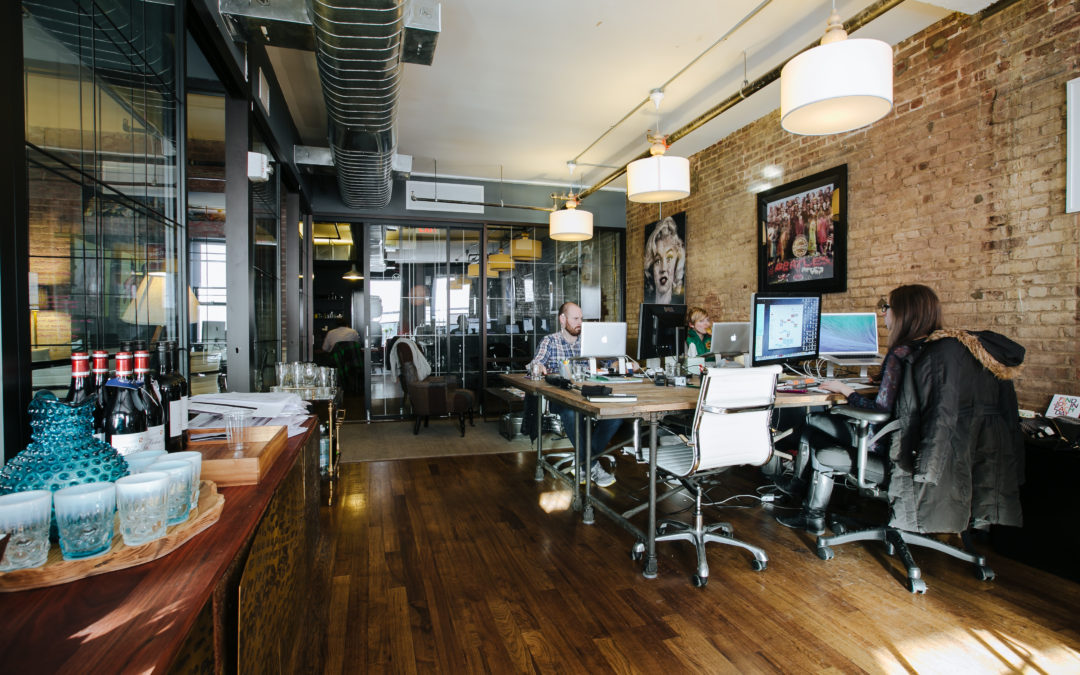When I got my first job sometime after graduate school, I had an office where I sold advertising space for a magazine called House Plants & Porch Gardens. I think I lasted about six months, but it was an eye-opening experience.
They put me in an office with a window, a telephone, a desk and chair and a bunch of house plants. Not only didn’t I have a green thumb, by I didn’t know a ficus from a fern. It was an incredibly boring experience for many reasons, but I did like the idea of having my office.
The energy in that office space felt like corporate hell.
Then, when I joined my wife with her growing brownie business, we eventually had a little. shared closet at the bakery that we used. With growth came a bigger bakery and larger office. All the office personnel had an office with a door. We didn’t think about the workspace – we just assumed everyone needed a private office to get their work done.
Thirteen years later, when we sold the company, I went to work for GoodMark Foods and once again, got an office to call my own. We were all in rooms with doors – which were mostly kept closed. It didn’t breed a lot of collaboration in the workspace. But one day we asked management if we could turn a conference room into a “Starbucks-like” work environment with sofas, comfy chairs, and a big screen TV so we could have more creative and collaborative meetings. Difficult to believe this was 1999.
WeWork – A Better Way to Work
But in 2000, companies started to look at other ways to put people together to collaborate by sharing common workspaces or allowing employees to work from home or a coffee shop. The idea of what an office is started to change. And Google, Facebook, and all the other Silicon Valley startups led the way for how people worked.
How WeWork was born
Miguel McKelvey and Adam Neumann founded WeWork in 2010. After meeting, they both worked in the same office building in NY that wasn’t full. McKelvey was an architect and Neumann at the time owned a baby clothing business. You couldn’t have two more unlikely partners. McKelvey grew up on a commune in Oregon and Neumann was born and raised in Israel.
All they had in common was height (both very tall) and a curiosity about work environments.
They started Green Desk in 2008, a precursor to WeWork. They created a more flexible work environment for startups and those in the emerging gig economy. They wanted to have a focus on sustainability, so they used recycled materials, furniture, and desks wherever possible but with a hip, relaxed vibe. Even their electricity was wind-powered.
The business took off and eventually sold Green Desk to their landlord. But Neumann and McKelvey knew they had a big idea and wanted to expand faster and knew that their landlord wasn’t the right partner.
WeWork – Marketing Experiences
What interests me about WeWork is that the owners saw a way to take vacant space and add immense value to thousands of companies who wanted to rent a small amount of space but with a community of like-minded entrepreneurs.
Today they have almost 60 locations in 15 countries where startups can go to work in a wide-open, well-lit environment with like-minded colleagues. They saw value not as landlords but in providing aspirational work environments. The business has a value of a whopping $17 billion dollars, but they continue to have a driving passion for what they do every day.
Is your work environment designed to help your teams collaborate, partner and build something exciting together? What does the layout and design of your workspace say about the organizational hierarchy and how your company gets things done?
I know how WeWorks – How do you work?
Could you use the help of an experienced marketing professional to help you grow your business? Let’s talk. Come to my office in Starbucks. 919 720 0995 or email me at jeffslater@themarketingsage.com
Photo courtesy of WeWork. All rights reserved.




